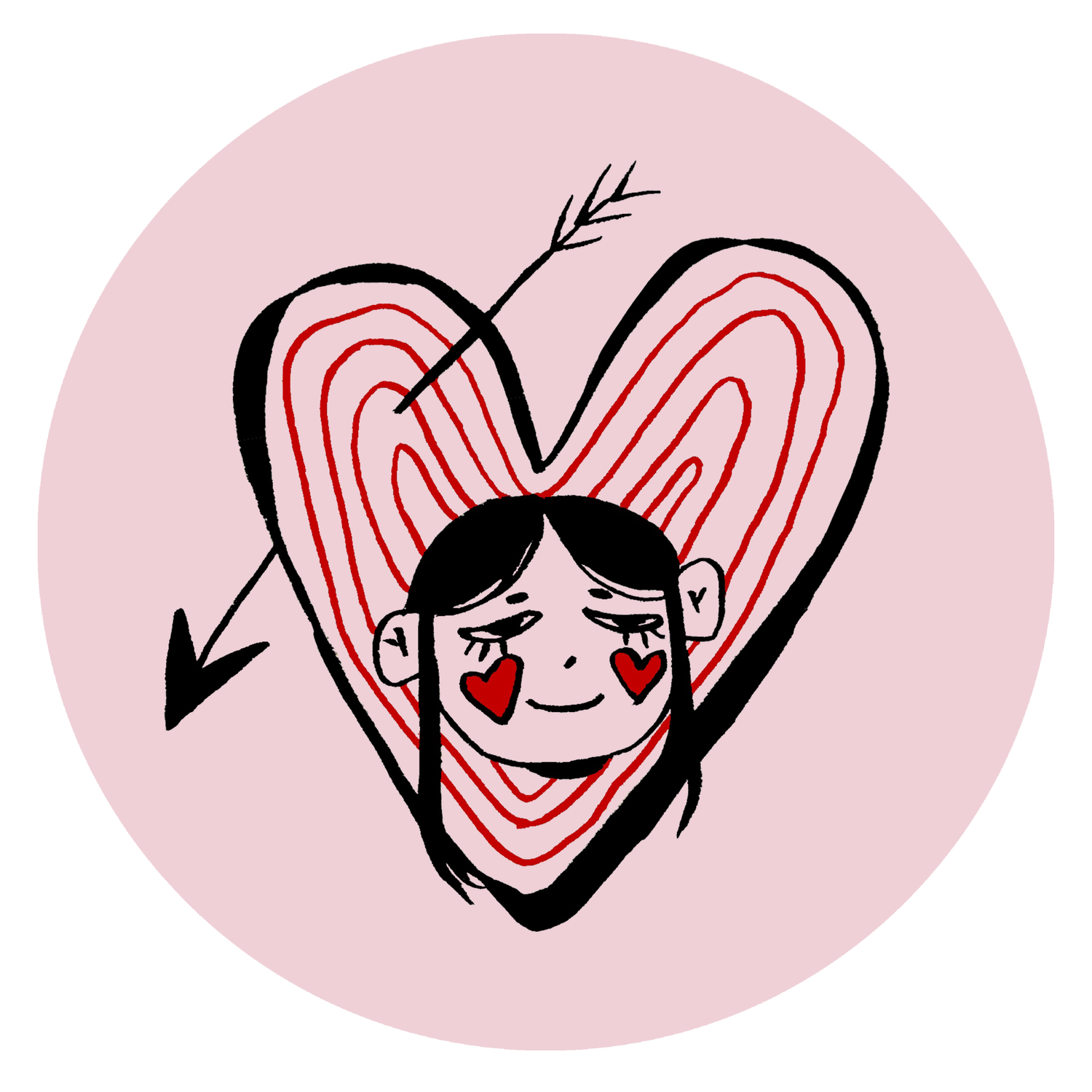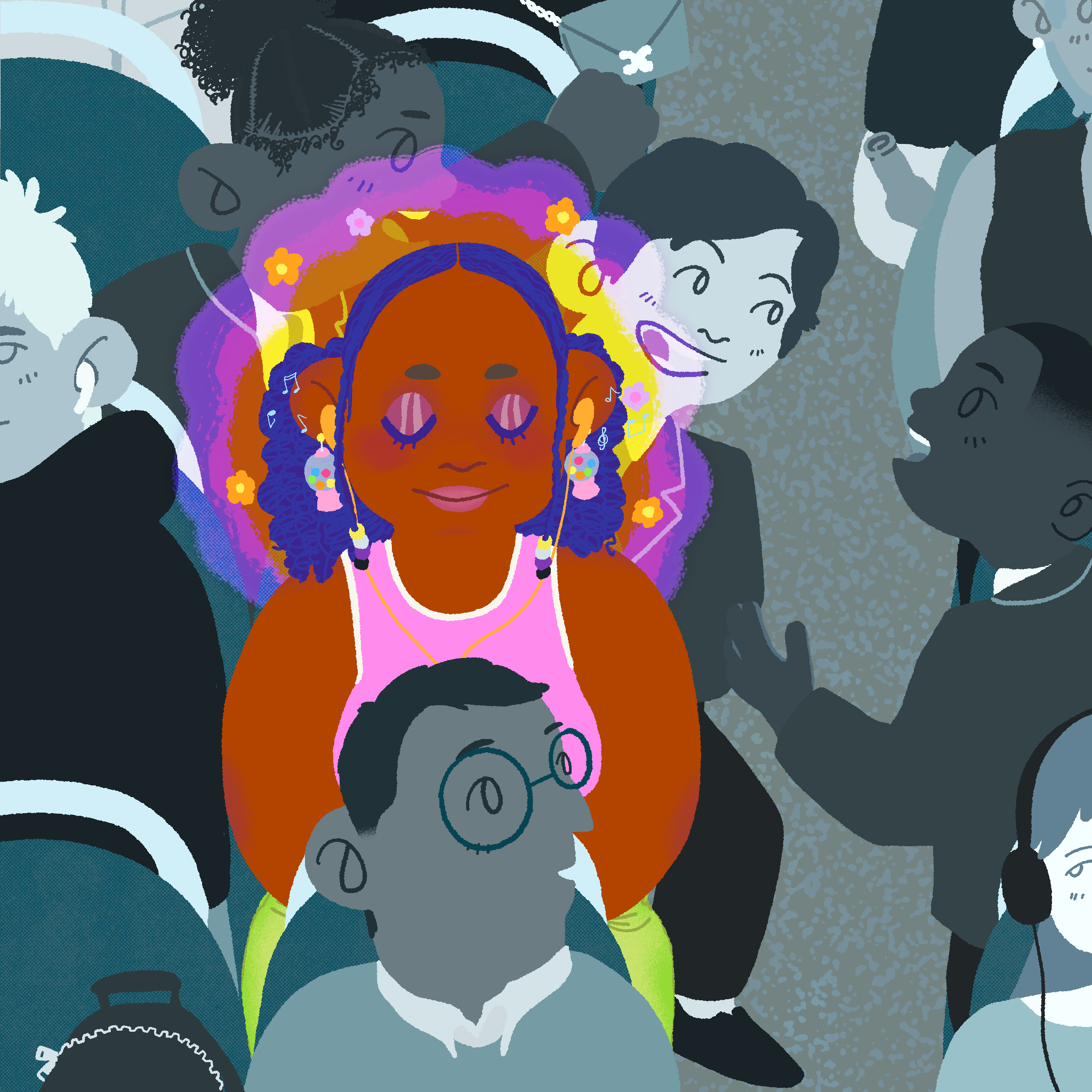The Importance of Queer Representation in Music
Illustration by Evan Wong
Music has always influenced pop culture through fashion, cinema and social movements. As a staple of our generation’s collective experience, many of us have looked to music for guidance, representation, pleasure, and meaning. It allows us to explore who we are and to find a sense of comfort in communities grown through similar experiences and stories.
Growing up I’ve always felt a strong connection to music in the way I perceived and experienced the world around me. It was only as I started to grow older that I began to truly see the way my synesthetic connection with music was beginning to form my character and act as a tool for understanding my innermost identity. My transition into adolescence brought with it a lot of uncertainty and change, which is part of a universally experienced period of growth. Beginning to explore my interests and engage in creative outlets opened up space for me to listen to and connect with art that reflected how I felt. Since moving into adolescence is a difficult period of time in which I particularly felt lost about my identity, I found relief in music that resonated with me and that helped me reconnect with myself and my emotions. That once overwhelming feeling of internal dissonance was now being embraced in an articulation of identity and experience in a profound and relatable way.
I began to see my feelings of shame and exclusion from primarily straight spaces dissipate as I gained insight into my feelings through perspective and a deeper connection with myself. The music I listened to worked its way into me, uprooting feelings that I had nudged away; it’s as if it had the ability to form my feelings into sound that resonated and projected outwards. Listening to music had always been a sensory feat as music is often a visual or tactile experience difficult to explain. Similarly, my identity as a queer person felt just as natural, a simple part of me that I had held all along. But growing up in a heteronormative society that deems queer spaces unnecessary or even dangrerous imprinted negative sentiments into my own understanding. Coming to terms with your sexuality is hard, especially when you are barred by internalised beliefs that are also ingrained within the communities you’re a part of. However, my deepening connection with music proved to be important in how I viewed my identity. Art depicting queer relationships as beautiful and enduring shifted my perspective.
The experience was always a metaphysical one; one that existed beyond just normal perception. The way music moves through people and through time, embodying an experience in a tender and pure way leaves me wholly rapt. Music moves through you; it moves through your senses, blurring the lines between them and creating a truly transcendental experience. I felt the sounds, I saw the colours and I heard the notes. This experience goes beyond just the artist; it goes to a community of listeners transmuting and shaping their own experience based on the art. This showed me my queer identity was something profound and sacred, something that transcended any boundaries set by societal standards. This connection to both one’s own experience and others’ helps to alleviate the sense of alienation and hurt many queer people grow up experiencing. It pushes forward a sense of belonging: something diminished in a community historically prejudiced and marginalised against.
Queer experiences are inherently different from straight experiences and hearing queer artists tell their story has influenced how I percieve myself and my own experiences. It’s like living through the music; you allow yourself to be influenced and channel that energy into your own life. These queer artists don’t just normalise difference: they acknowledge and express it in an unapologetic way; “we don’t want our love to be normalised: it isn’t, it’s queer and it’s beautiful and it’s whole and worth its own expression.” The hurt, the longing, the rapture, the light–– all these are shared experiences but unique for each person. It often feels like a transformative experience to hear and connect with a song or artist that feels so particular and comforting; one that describes and explores the experiences and emotions alike that you’ve felt. This feeling of home, of connection, is often excluded from the experiences of many LGBTQIA+ youth.
Many of us grew up in environments that deem open conversations on LGBTQIA+ topics taboo and unnecessary, so it’s important to have outlets and role models who promote acceptance and individuality. Artists like Clairo, Girl in Red, Frank Ocean, Sufjan Stevens and Phoebe Bridgers have provided a sense of comfort and understanding through their music that has helped them grow from having a small community of listeners to being easily recognisable. Their music provides an outlet for connecting with similar experiences while simultaneously creating a space to feel included and safe. This representation for many queer people goes beyond just normalisation: it helps provide a feeling of familiarity away from stereotypes and discrimination.
The desire to be understood by others is a longing for solace, especially at times when it’s hard to even understand your own feelings. To have art that speaks to these very corners of us, to explore and project these emotions and to provide a window through to other’s experiences, leaves us with a way to navigate our own feelings. Adolescence is a time of rapid change and development, a time where the rapport of art can provide a backbone for growth. It confronts us with our own feelings, those nudged away and buried. It offers a way to see into the future and view the world around us in an unbridled and unrestricted way. As a known conductor for change and culture, music is intrinsic to the human experience and the way communities maintain and foster such strong connections among members.
Music has the ability to shape how we experience the world around us, especially personal moments of growth and exploration. That’s why queer artists are so important; they provide a feeling of being a little less alone. Whilst music has the opportunity to shift public opinion, it mainly influences the individual listeners. I asked a few of my friends about the impact queer representation in music has had on them, and their answers were as follows:
“It’s helped me figure out my identity and feel more valid.”
“It’s given me a range of music to explore and enjoy, and even emotionally connect to.”
“Queer representation in music and queer artists definitely had a big impact on me and helped me to feel more accepted…as someone who is unsure of their sexuality and often feels lost and confused, I find many artists a big inspiration.”
“Queer representation in music helped me a lot especially through lockdown and the stages of finding myself and coming out. It gave me a purpose and showed me that I wasn’t alone and being queer didn’t mean you were an outsider.”
Based on these responses, it’s clear to see how much music has allowed people to come to terms with their identity. In addition, with this increase in queer representation in the mainstream comes a more positive and accurate media portrayal of queer people, going beyond just the music industry. This has brought more awareness to social efforts to alleviate queer prejudice, and has helped people feel more accepting of themselves and others. Personally, it has allowed me to find similar artists who I can equate my personal experiences to and find the solace I seek. Whether that feeling is love, desire, sadness, nostalgia or longing, there always seems to be a song I can go to which portrays these very emotions. Music has always been a staple of our experience and its importance continues to transcend barriers to provide representation for the marginalised.

